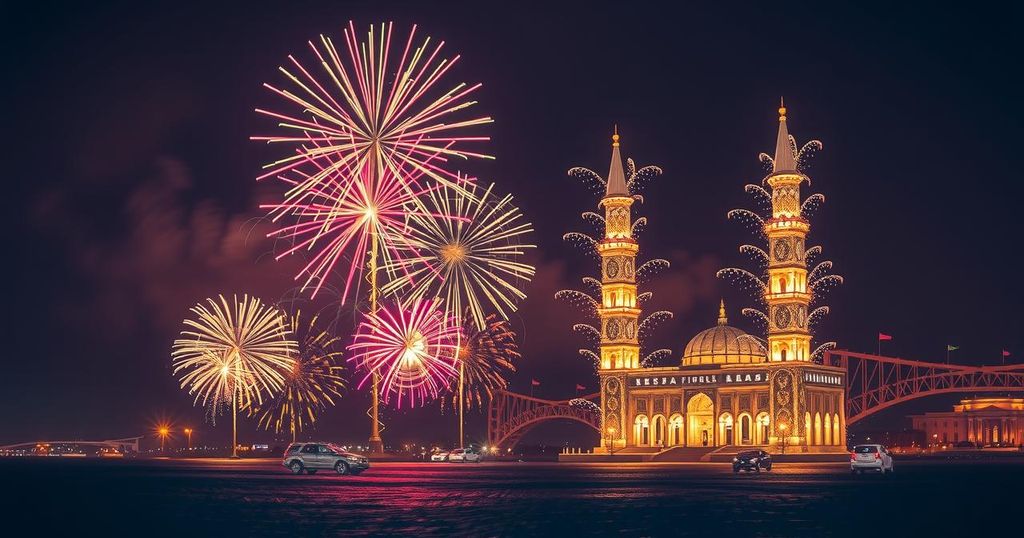Middle East Residents Greet 2025 Amid Hope and Despair

As the year 2025 begins, feelings in the Middle East range from cautious optimism in Syria to despair in Gaza, reflecting the stark contrasts amid ongoing conflicts. Many in Damascus celebrate the potential for future peace post-Assad, while in Lebanon, the atmosphere remains tense. Gaza’s residents confront overwhelming loss, seeing little hope for improvement as the new year unfolds.
As the Middle East transitioned into the new year, the sentiments among its residents varied significantly across the region, reflecting the ongoing conflict and change. In Damascus, the excitement was palpable as many welcomed the potential for a brighter future following the unexpected fall of Bashar Assad’s government. Hostility and optimism juxtaposed themselves as some Syrians expressed hope for peace and national unity, looking towards a time when communities divided by war could reconnect. Abir Homsi optimistically envisioned a return to harmony among citizens celebrating together, irrespective of their backgrounds.
Conversely, the atmosphere in Beirut was more cautious, as the lingering impact of economic hardships and ceaseless instability continued to marginalize the hopes for the Lebanese populace. While some families indulged in winter sports at the external resorts, others remained acutely aware of the uncertainty engulfing their daily lives. Mohammad Mohammad, displaced by the violence, held onto a cautious hope for peace despite the looming challenges ahead.
In Gaza, however, the mood was somber and filled with despair, characterized by extensive loss and suffering due to the recent conflicts with Israel. Many residents, including Nour Abu Obaid, spoke of a dire past year, highlighting the immense casualties and destruction. This pervasive sense of hopelessness encapsulated the sentiments in Gaza, where only a few dared to entertain the prospect of a better future. Ismail Salih articulated a shared desire for the war to end, expressing a longing for a return to normalcy where Palestinians could live secure and peaceful lives.
The complex state of affairs in the Middle East at the beginning of 2025 serves to illuminate the poignant contrasts in experience and expectation among various groups. While some echo a desire for unity and healing, others are engulfed in the overwhelming realities of ongoing conflict and loss, rendering predictions for the future increasingly difficult.
Overall, the arrival of 2025 signifies not only the promise of renewal for some but also a reminder of the heavy toll inflicted by years of strife on countless individuals across the Middle East.
The Middle East has been a region characterized by ongoing conflict, political instability, and societal unrest, significantly affecting the lives of its inhabitants. Recent developments, including the fall of Bashar Assad’s government in Syria and the ongoing tensions between Israel and Hezbollah, have added another layer of complexity to the regional landscape. The humanitarian crises in places such as Gaza further underscore the struggles faced by civilians amidst war, violence, and economic distress. The transition into the new year serves as a backdrop for contrasting emotions of hope, despair, uncertainty, and resilience among the people affected by these tumultuous changes.
In summary, the arrival of 2025 has evoked mixed reactions across the Middle East, with some residents expressing hope for peace and unity, while others remain entrenched in despair following recent conflicts. As communities navigate their path forward in the wake of instability, the varied experiences and expectations illustrate the ongoing struggles and resilience found throughout the region. Despite the challenges that lie ahead, the collective desire for stability and better futures remains a powerful sentiment among the people.
Original Source: www.pbs.org








